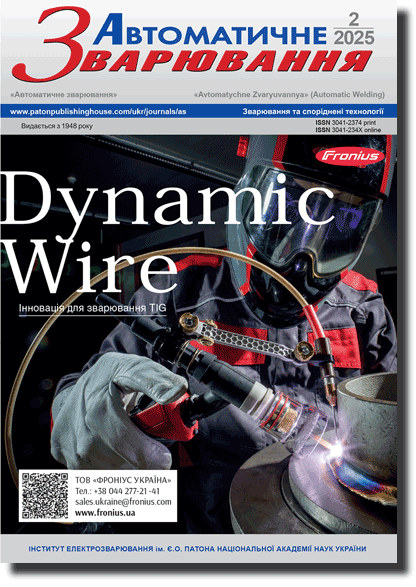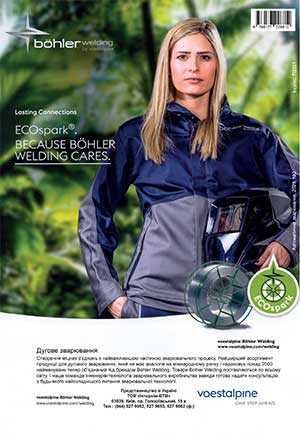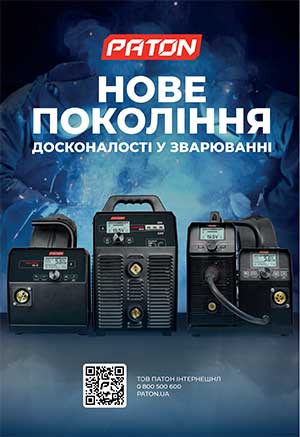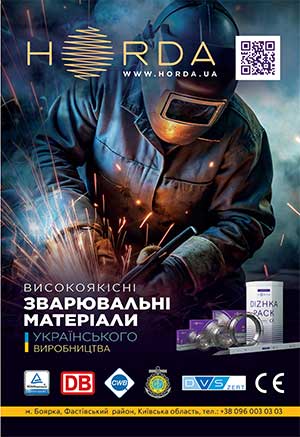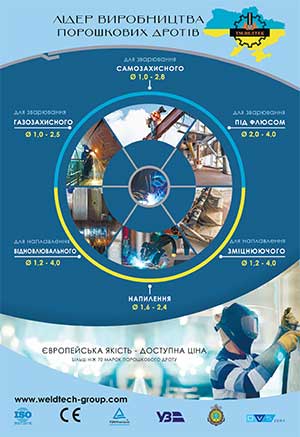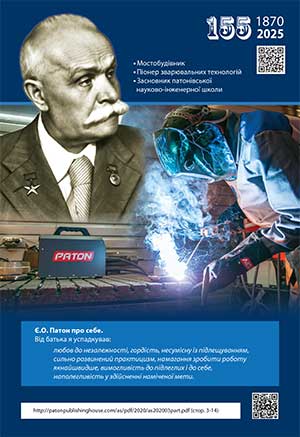| 2025 №02 (02) |
DOI of Article 10.37434/as2025.02.03 |
2025 №02 (04) |
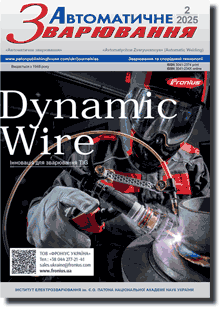
"Avtomatychne Zvaryuvannya" (Automatic Welding), #2, 2024, pp. 23-28
Ways to increase the fatigue fracture resistance of welded joints of high-hardness armored steels
O.A. Gaivoronsky1, V.D. Poznyakov1, A.V. Safinsky2, A.V. Zavdoveev1, T.O. Alekseenko1, V.A. Yashchuk1
1E.O. Paton Electric Welding Institute of the NAS of Ukraine 11 Kazymyr Malevych Str., 03150, Kyiv, Ukraine. E-mail: paton39@ukr.net2DP «Zhytomyr armored tank plant». 1 Druzhby Narodiv Str., 12441, Zhytomyr region, Novoguyvinske urban settlement, Ukraine
The influence of mechanical impact methods of processing on fatigue resistance of joints of high-hardness armored steels, compared to low tempering, in welding with high-alloy welding materials was studied. The paper presents the results of tests by cyclic out-of-plane bending of welded joints of armored steel of HB 500 MOD grade, made with wire of KHORDA 307Ti brand (08Kh20N9G7Т alloying system), additionally subjected to layer-by-layer low-frequency peening of the deposited metal during welding, high-frequency peening of the fusion zone and adjacent metal of the HAZ and shot peening of the joint surface after their welding. It is established that thermal tempering of armored steel joints with a high-alloy weld does not contribute to increase in fatigue resistance. The most effective methods of increasing the fatigue resistance of the joints are mechanical high-frequency peening or enhanced shot peening after welding. 10 Ref., 4 Fig.
Keywords: high-hardness armored steel, welded joints, fatigue fracture resistance, low-temperature tempering, mechanical low-frequency peening, mechanical high-frequency peening, shot peening
Received: 18.10.2024
Received in revised form: 21.01.2025
Accepted: 17.02.2025
References
1. Efimenko, M.G., Radzivilova, N.O. (2003) Metal science and thermal processing of welded joints. Kharkiv, NTU KhPI [in Ukrainian].2. Anokhov, A.E., Korolkov, P.M. (2006) Welding and heat treatment in power engineering. Kyiv, Ekotekhnologiya [in Ukrainian].
3. Gaivoronskyi, O.A., Poznyakov, V.D., Berdnikova, O.M. et al. (2020) Influence of low-temperature tempering on structure and properties of welded joints of high-strength steel 30Kh2N2MF. The Paton Welding J., 6, 20-26. https://doi.org/10.37434/tpwj2020.06.04
4. Dronov, V.S., Golovin, S.A. (2004) Limited durability and crack resistance of high- and medium-strength steels. Materialoznavstvo, 12, 41-47 [in Ukrainian].
5. Paton, B.E. (2000) Modern trends toward increase in strength and life of welded structures. The Paton Welding J., 9-10, 3-8.
6. Lashchenko, G.I., Demchenko, Y.V. (2008) Energy-saving technologies for post-welding processing of metal structures. Kyiv, Ekotekhnologiya [in Ukrainian].
7. Knysh, V.V., Kuzmenko, A.Z. (2005) Increasing the fatigue resistance of welded joints by high-frequency mechanical peening. Svarshchik, 2, 19-21.
8. Bonnen, J.J., Mandapati, R., Kang, H., Iyengar, R.M. et al. (2009) Durability of advanced high strength steel gas metal arc welds. SAE Intern. J. of Materials and Manufacturing, 2(1), 155-171. https://doi.org/10.4271/2009-01-0257
9. Kovalchuk, V.S., Knysh, V.V., Poznyakov, V.D., Kasatkin, S.B. (2007) Method for increasing cyclic and service life of welded steel structures. The Paton Welding J., 3, 37-38.
10. Cabrilo, A., Sedmak, A., Burzic, Z., Perkovic, S. (2019) Fracture mechanics and fatigue crack propagation in armor steel welds. Engineering Failure Analysis, 106, 104155. https://doi.org/10.1016/j.engfailanal.2019.104155
Advertising in this issue:
To order the electronic version of the paper:
O.A. Gaivoronsky, V.D. Poznyakov, A.V. Safinsky, A.V. Zavdoveev, T.O. Alekseenko, V.A. YashchukWays to increase the fatigue fracture resistance of welded joints of high-hardness armored steels
Automatic Welding №02 2025 p.23-28
The cost of article (pdf): 13 $, 12 €, 150 UAH (1 copy. )
fill in the form below:
The cost of subscription/purchase order journals or individual articles
| Journal/Currency | Annual Set | 1 issue printed |
1 issue |
one article |
| TPWJ/USD | 384 $ | 32 $ | 26 $ | 13 $ |
| TPWJ/EUR | 348 € | 29 € | 24 € | 12 € |
| TPWJ/UAH | 7200 UAH | 600 UAH | 600 UAH | 280 UAH |
| AS/UAH | 1800 UAH | 300 UAH | 300 UAH | 150 UAH |
| AS/USD | 192 $ | 32 $ | 26 $ | 13 $ |
| AS/EUR | 180 € | 30 € | 25 € | 12 € |
| SEM/UAH | 1200 UAH | 300 UAH | 300 UAH | 150 UAH |
| SEM/USD | 128 $ | 32 $ | 26 $ | 13 $ |
| SEM/EUR | 120 € | 30 € | 25 € | 12 € |
| TDNK/UAH | 1200 UAH | 300 UAH | 300 UAH | 150 UAH |
| TDNK/USD | 128 $ | 32 $ | 26 $ | 13 $ |
| TDNK/EUR | 120 € | 30 € | 25 € | 15 € |
AS = «Automatic Welding» - 6 issues per year;
TPWJ = «PATON WELDING JOURNAL» - 12 issues per year;
SEM = «Electrometallurgy Today» - 4 issues per year;
TDNK = «Technical Diagnostics and Non-Destructive Testing» - 4 issues per year.





